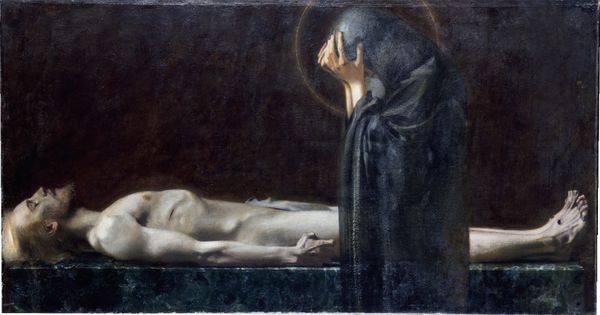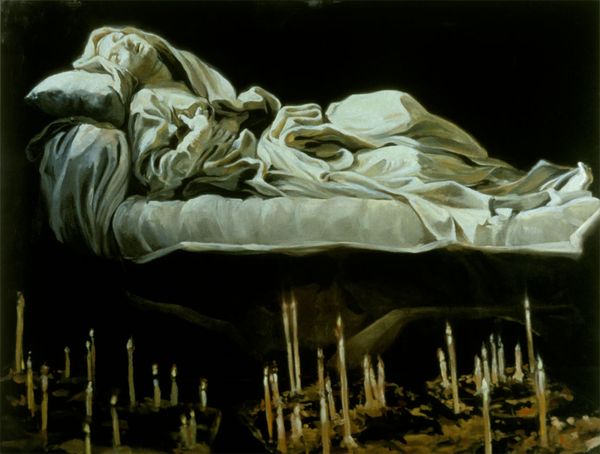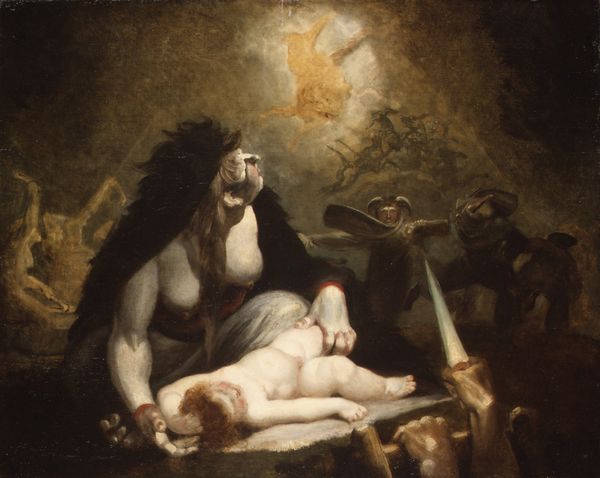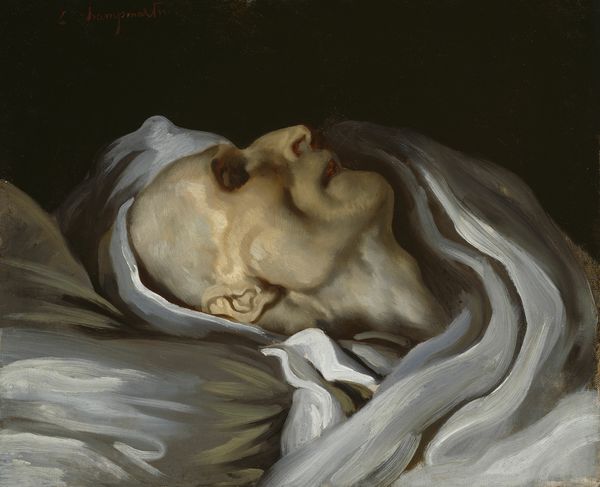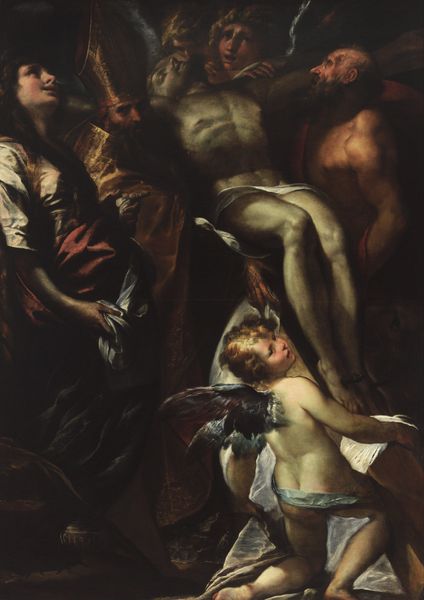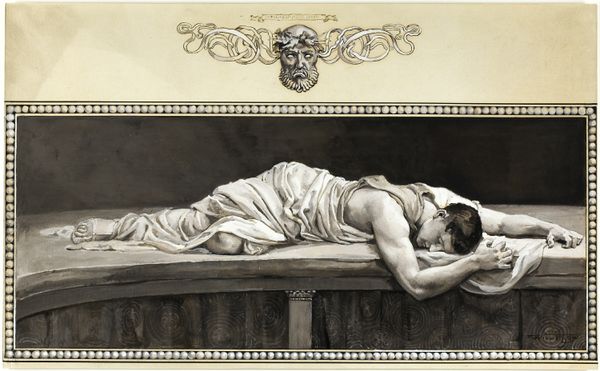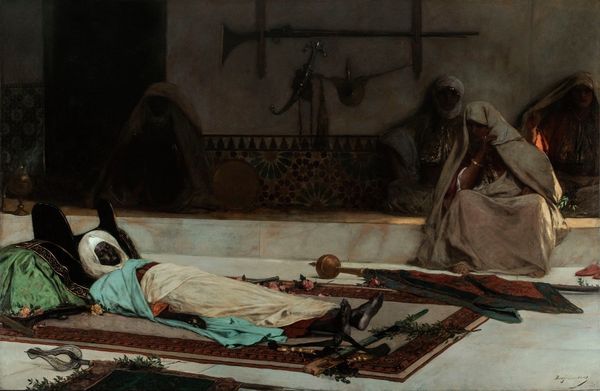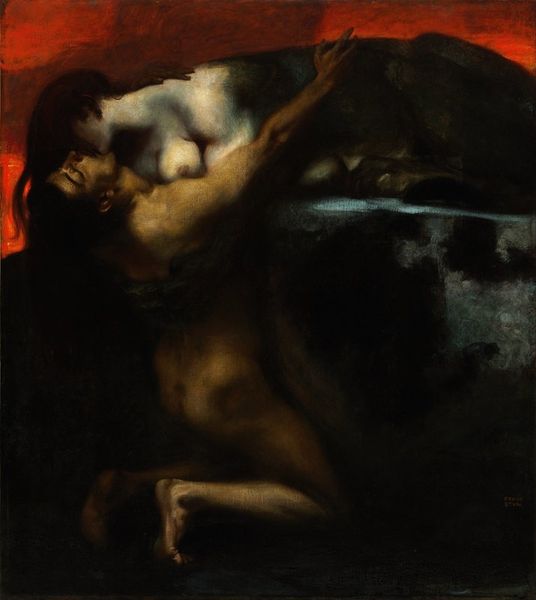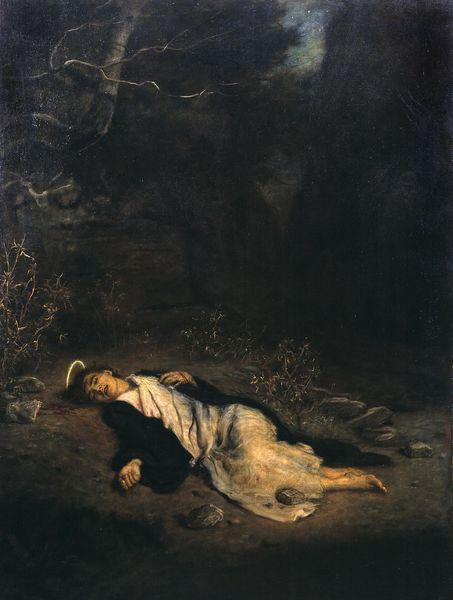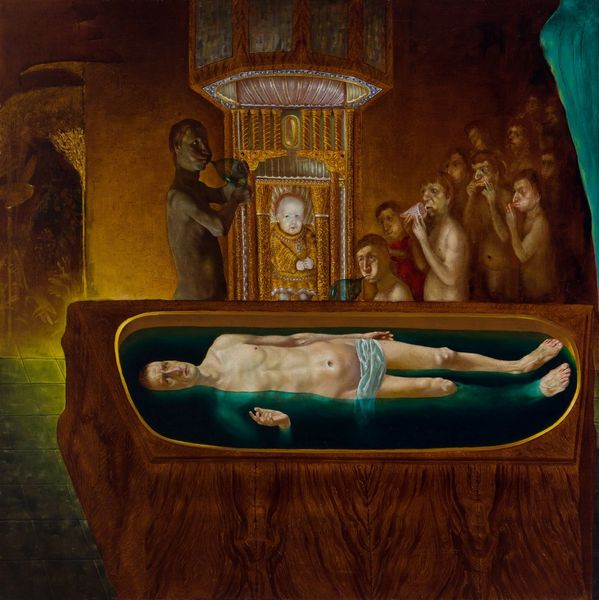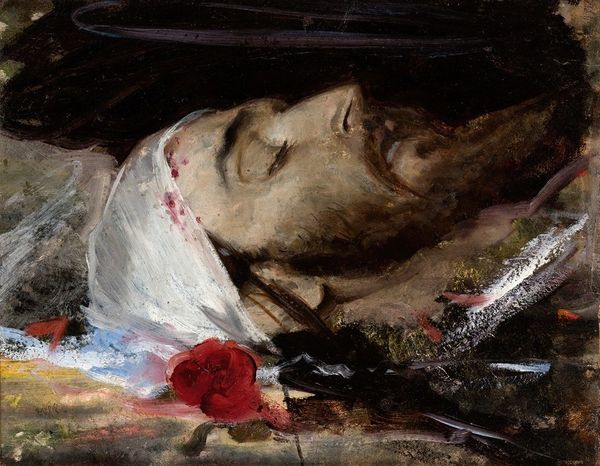
painting, oil-paint
#
portrait
#
baroque
#
painting
#
oil-paint
#
oil painting
#
jesus-christ
#
christianity
#
history-painting
#
charcoal
#
realism
Copyright: Public domain
Curator: Here we have Vladimir Borovikovsky’s "Jesus at the tomb," an oil painting that resonates with the somber realism of the Baroque period. The body is so starkly displayed. Editor: My immediate reaction is the claustrophobia induced by the tight framing of the tomb. The weight of the material – the stone, presumably – seems to press down on the figure. Curator: Precisely. The historical and religious contexts are obviously inescapable, informing both our aesthetic reading and emotional experience. Borovikovsky painted this at a pivotal time, when Russian Orthodoxy, with its ingrained concepts of sin, suffering and redemption, deeply influenced national identity. The visual narrative reinforces social ideals and expectations surrounding faith and submission to a higher power. Editor: I agree, but I am interested in what his choice of oil paints contributes here. It allows such deep, rich color—particularly in the earth tones of the tomb—which contrasts intensely with the pallor of Christ’s skin and the stark white linen. Curator: The artist undeniably exploits color here. The symbolism inherent in those stark tonal contrasts speaks to purity against worldly constraints, sin, death. It also hints at the transformative possibility of redemption in a society stratified along the lines of sin, labor, and moral capital. Editor: Yes, the manipulation of these common materials allows Borovikovsky to evoke potent emotions through these textural contrasts. How deliberate were these formal and material choices? Were cheaper materials considered at any point? Who paid? Was Borovikovsky compelled to express such themes? The canvas itself may also represent economic or social value to him at the time, the availability and type all telling their own tale. Curator: Those material considerations undeniably intersect with questions of power. Patronage often dictated subject matter, the resources used. However, viewing the artwork through the lens of lived experience invites questioning—did faith feel as prescriptive for Borovikovsky as this suggests, or was his aim directed toward aligning with the dominant political forces and ensuring continued commissions? Editor: This piece offers endless opportunities to investigate. Whether you choose to unpack the political and social implications as it relates to matters of belief, power, gender, or trace the arc of production by examining the artist’s specific selection and use of materials. Curator: Indeed. And for me, thinking about how such themes echo today, through both conscious reiteration or contestation.
Comments
No comments
Be the first to comment and join the conversation on the ultimate creative platform.
